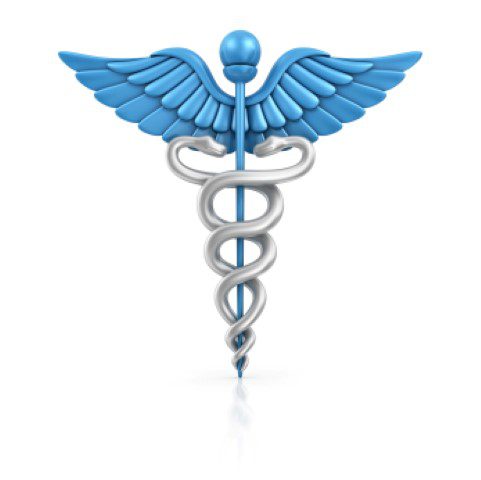 |
| Portrait of an Elderly Physician Gaspare Pagani Philadelphia Museum of Art |
This painting from the Philadelphia Museum of Art is attributed to Gaspare Pagani, a relatively obscure sixteenth century artist from Modena, Italy, the world capital of balsamic vinegar. It shows an elderly man carrying a staff with two serpents coiled around it, serving to identify him as a physician. The man has made no momentous contributions to medicine, and in fact no information about him seems to be available. But in some exacting circles his staff could raise eyebrows, being neither the Caduceus with two serpents nor the Rod of Asclepius with only one. Yet having two serpents coiled around a simple rod is by no means unusual. In fact, there is an ancient tale of two such serpents shamelessly copulating in public and being struck with a cane by the seer Tiresias, who as punishment was transformed into a woman and remained so for seven years. The serpents apparently remained unscathed, their heads still lovingly pointing at each other.
But why should the healing professions should have chosen as their emblem such a dangerous and often poisonous reptile? It seems that the relationship goes back to the dawn of human history, and that since time immemorial serpents have been viewed as life-giving, associated with rebirth and also with strength. Hence the snake-staff symbols of ancient gods such as Osiris and Quetzacoatl, also of the Knights Templar, the Russian and Indian Orthodox churches, the crozier of the Bishop of London, the Speaker’s mace in the British and Australian parliaments, the ETA Basque terrorist group, and even the Nazis and Tiananmen Square.
 |
| Caduceus |
Painted vases from ancient Mesopotamia depict the warrior queen Ishtar/Inanna as having a staff with either one or two serpents. Her lover, the healing god Ningishita, had only one but with two heads and two sex organs, one male and one female. Regardless of how many serpents, priest-healers used them as their symbol and perhaps their poison as medicine, treating their patients for a variety of diseases, including the guinea worm, Dracunculus medinensis, itself shaped like a miniature snake.
At a later date snake myths and symbols also reached the land of the Israelites. Lilith, the predecessor of Eve, was often shown with serpents coiled around a staff or her body. And in Genesis it is written that the serpent, “more subtle than any beast in the field that Lord God has made,” beguiled our mother Eve into a disastrous project and was cursed to go on his belly and eat dust for all the days of its life.
Then in Greece, around 1200 BC, a mere mortal practicing physician known as Asclepius was elevated by Apollo to the pantheon of gods and is often depicted as holding up a staff with a single serpent coiled around it. Once settled in Olympus, he ran into competition from Hermes (or Mercury), whose magic wand had two serpents, perhaps representing wisdom or shrewdness, working as he did as not only conductor of the dead to Hades but also as protector of merchants and thieves. In the seventh century alchemists adopted this Hermes and his two-serpent model as patron of their magical practices and beliefs. This is the origin of the Caduceus, a representation of two entwined serpents featured under a pair of wings, and popular at a time when alchemy was closely related to medicine.
We now must fast-forward to 1902, when the United States Army Corps adopted the two-serpent Caduceus as its symbol, featuring it at first on battlefield ambulances. Later it became its official symbol, so that eventually many medical associations also adopted it when in fact they should have used the staff of Asclepius, the ancient and legitimate god of medicine and healing. So the Caduceus is now often erroneously used as the symbol of medicine. A study carried out in 1992 revealed that more academic or non-for profit organizations did in fact use the staff of Asclepius, while for-profit or commercial organizations, including pharmaceutical companies, were more likely to be represented by the Caduceus. These findings, if confirmed, would erroneously place many healthcare associations in the camp of Hermes, protector of merchants and thieves, rather than that of Asclepius, true patron of medicine and of the healing professions.
GEORGE DUNEA, MD, Editor-in-Chief
Highlighted in Frontispiece Volume 9, Issue 4 – Fall 2017
Winter 2011 | Sections | Art Flashes

Leave a Reply